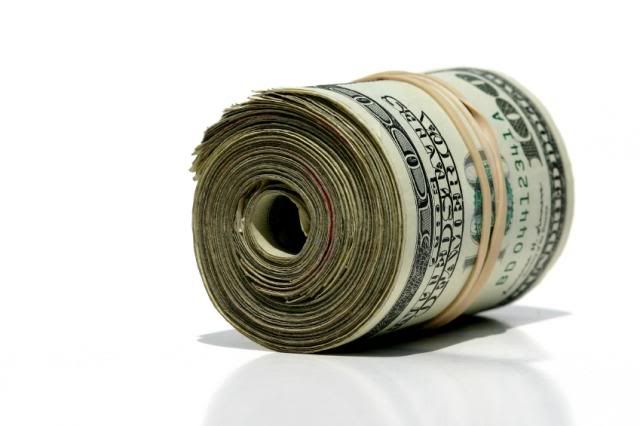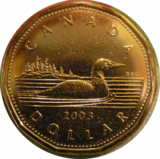"All Geeked-Up for the Deadline..."
Newtown Square, PA • United States • 45 Years Old • Male
The Law of Unintended Consequences: The Cap & Cost Certainty
Posted 10:52 AM ET | Comments 16
The Law of Unintended Consequences states that any purposeful action will likely produce some unexpected or unintended consequences. These consequences are almost always divergent from the intended result and, often, the polar opposite.
Two words uttered by Gary Bettman, in 2004, radically changed the landscape of the National Hockey League forever. This notion plunged the game of hockey into unknown territory and cost hockey fans the 2004-2005 season. Those two words...cost certainty.

Prior to the lockout, the NHL was the only major North American sport that did not have a semblance of a salary cap, revenue sharing, luxury tax or a minimum floor to which teams must spend. What ensued was the economic version of "might makes right," where a small minority of the teams that that had a willing owner and money to spend could do so wantonly, without repercussion, and stockpile enough talent to ensure a dynasty. Good for players' salaries, not so good for the rest of the league.
The league insisted that teams in the NHL paid a much higher portion of their revenues towards player salaries, a number upwards of 75%, than the other major sports in North America. NHL Commissioner, Gary Bettman, wanted to ensure that players' salaries wouldn't continue to skyrocket and thereby jeopardize the viability of individual franchises and the stability of the league, as a whole. With one fell swoop, Bettman sought to upset the fiscal apple cart. The Commissioner presented the NHLPA with several options to achieve the "cost certainty" that was being sought. The union saw this as a thinly veiled attempt to institute a salary cap which it vowed it would not accept. The two sides were at an impasse and neither one was willing to blink. Consequently, the Collective Bargaining Agreement (CBA) expired on September 15, 2004, the owners locked the players out and a full blown labor dispute was well underway.

The end of the lockout occurred when the NHLPA agreed to accept a hard salary cap based on league wide revenues. The NHL conceded the notion of revenue sharing as a means to more evenly spread dollars around and inflate the salary cap figure. In language only a lawyer could love, the salary cap was now referred to as "the upper limit of the payroll range" and the salary cap for the post-lockout, 2005-06 season was set at $39 million.
Here's where the law of unintended consequences comes into play...In order to ensure the financial viability of NHL franchises, Gary Bettman demanded "cost certainty" as a means to try to control players' salaries and protect club revenues. After losing a season of hockey, he got his wish with the NHLPA agreeing to a salary cap. The delicious irony of what the salary cap entails is this...just as there is an "upper limit of the payroll range" to which teams may spend, there are also provisions in the CBA for a "lower limit of the payroll range" (i.e. salary floor) to which teams must spend.
By instituting a salary cap that permits a maximum number of dollars than can be spent on salaries, the league agreed to a minimum number of dollars that each club is required to spend. That obligation comes by way of a formula that simply states that the salary floor will be set at $16 million below the upper limit of the cap - which for the upcoming season is $56.7 million - on players' salaries. In 2008-09, the salary floor number is in the neighborhood of $40.7 million in order to be CBA compliant.
No big, right?



Not so fast. The strength of the Canadian dollar has vastly improved, the demise of the U.S. dollar as a currency power has hastened and the fiscal health of the six Canadian hockey teams have improved. What this means is that the financial strength of the league has never been better. What it also means is that the upper limit of the salary cap has never been higher. As mentioned, the first post-lockout year’s salary cap was set at $39 million. The following season it went up to $44 million, then $50.3 million and finally 56.7 million for the upcoming season. Since the 2005-06 season, the salary floor has increased a whopping $17 million dollars in just four seasons and now sits just above 40 million - which also happens to be one million MORE than the first salary cap figure post-lockout. Let me repeat that...the $40.7 million dollar floor for the 2008-09 season is $1.7 MORE than the upper limit of the salary cap just four seasons prior. Glad you missed a year of hockey, eh?

So what does all this mean?
It means that the level to which all teams must pay its players (salary floor) is increasing at such a staggering rate that sooner or later a club or two might not be able to meet the floor. As of this writing, the L.A. Kings have spent only $27.7 million and have yet to spend just under $13 million to be CBA compliant. While it is true they have only signed 14 players and will make the floor with ease, it is conceivable that there will come a time when the salary cap limit has increased to such a degree that the floor may become untenable for some clubs. While the financial health of the league has never been better - $2.2 Billion in revenues in 2006-07 - the very clubs Commissioner Bettman strove to protect by demanding "cost certainty" might now be imperiled by very workings of his own creation.

Isn't irony a *%&(#$(*#&#)?
Thanks for reading...
SYF

<a href="http://www.linkedin.com/in/johnhrichardsiv" ><img src="http://www.linkedin.com/i...n_viewmy_120x33.gif" width="120" height="33" border="0" alt="View John H. Richards IV's profile on LinkedIn"></a>
Two words uttered by Gary Bettman, in 2004, radically changed the landscape of the National Hockey League forever. This notion plunged the game of hockey into unknown territory and cost hockey fans the 2004-2005 season. Those two words...cost certainty.

Prior to the lockout, the NHL was the only major North American sport that did not have a semblance of a salary cap, revenue sharing, luxury tax or a minimum floor to which teams must spend. What ensued was the economic version of "might makes right," where a small minority of the teams that that had a willing owner and money to spend could do so wantonly, without repercussion, and stockpile enough talent to ensure a dynasty. Good for players' salaries, not so good for the rest of the league.
The league insisted that teams in the NHL paid a much higher portion of their revenues towards player salaries, a number upwards of 75%, than the other major sports in North America. NHL Commissioner, Gary Bettman, wanted to ensure that players' salaries wouldn't continue to skyrocket and thereby jeopardize the viability of individual franchises and the stability of the league, as a whole. With one fell swoop, Bettman sought to upset the fiscal apple cart. The Commissioner presented the NHLPA with several options to achieve the "cost certainty" that was being sought. The union saw this as a thinly veiled attempt to institute a salary cap which it vowed it would not accept. The two sides were at an impasse and neither one was willing to blink. Consequently, the Collective Bargaining Agreement (CBA) expired on September 15, 2004, the owners locked the players out and a full blown labor dispute was well underway.

The end of the lockout occurred when the NHLPA agreed to accept a hard salary cap based on league wide revenues. The NHL conceded the notion of revenue sharing as a means to more evenly spread dollars around and inflate the salary cap figure. In language only a lawyer could love, the salary cap was now referred to as "the upper limit of the payroll range" and the salary cap for the post-lockout, 2005-06 season was set at $39 million.
Here's where the law of unintended consequences comes into play...In order to ensure the financial viability of NHL franchises, Gary Bettman demanded "cost certainty" as a means to try to control players' salaries and protect club revenues. After losing a season of hockey, he got his wish with the NHLPA agreeing to a salary cap. The delicious irony of what the salary cap entails is this...just as there is an "upper limit of the payroll range" to which teams may spend, there are also provisions in the CBA for a "lower limit of the payroll range" (i.e. salary floor) to which teams must spend.
By instituting a salary cap that permits a maximum number of dollars than can be spent on salaries, the league agreed to a minimum number of dollars that each club is required to spend. That obligation comes by way of a formula that simply states that the salary floor will be set at $16 million below the upper limit of the cap - which for the upcoming season is $56.7 million - on players' salaries. In 2008-09, the salary floor number is in the neighborhood of $40.7 million in order to be CBA compliant.
No big, right?



Not so fast. The strength of the Canadian dollar has vastly improved, the demise of the U.S. dollar as a currency power has hastened and the fiscal health of the six Canadian hockey teams have improved. What this means is that the financial strength of the league has never been better. What it also means is that the upper limit of the salary cap has never been higher. As mentioned, the first post-lockout year’s salary cap was set at $39 million. The following season it went up to $44 million, then $50.3 million and finally 56.7 million for the upcoming season. Since the 2005-06 season, the salary floor has increased a whopping $17 million dollars in just four seasons and now sits just above 40 million - which also happens to be one million MORE than the first salary cap figure post-lockout. Let me repeat that...the $40.7 million dollar floor for the 2008-09 season is $1.7 MORE than the upper limit of the salary cap just four seasons prior. Glad you missed a year of hockey, eh?

So what does all this mean?
It means that the level to which all teams must pay its players (salary floor) is increasing at such a staggering rate that sooner or later a club or two might not be able to meet the floor. As of this writing, the L.A. Kings have spent only $27.7 million and have yet to spend just under $13 million to be CBA compliant. While it is true they have only signed 14 players and will make the floor with ease, it is conceivable that there will come a time when the salary cap limit has increased to such a degree that the floor may become untenable for some clubs. While the financial health of the league has never been better - $2.2 Billion in revenues in 2006-07 - the very clubs Commissioner Bettman strove to protect by demanding "cost certainty" might now be imperiled by very workings of his own creation.

Isn't irony a *%&(#$(*#&#)?
Thanks for reading...
SYF

<a href="http://www.linkedin.com/in/johnhrichardsiv" ><img src="http://www.linkedin.com/i...n_viewmy_120x33.gif" width="120" height="33" border="0" alt="View John H. Richards IV's profile on LinkedIn"></a>
Leave a Comment
You must be logged in to leave a comment.Blog Archive
20 Why Being a Hockey Fan Matters...
23 An open letter to the NHL Officials Association...
24 Thoughts as I prepare to head up I-95...
23 An open letter to the NHL Officials Association...
24 Thoughts as I prepare to head up I-95...
13 What about HockeyBuzz is so special?
16 2007 Philadlephia Flyers - And you may ask yourself...well
21 New things afoot at HB
23 The Flyers' Young Guns - Spotlight on Jeff Carter
27 Another of the Flyers' Young Guns: Mike Richards
31 Marty Biron: Karn Evil 9 1st Impression - Part II
16 2007 Philadlephia Flyers - And you may ask yourself...well
21 New things afoot at HB
23 The Flyers' Young Guns - Spotlight on Jeff Carter
27 Another of the Flyers' Young Guns: Mike Richards
31 Marty Biron: Karn Evil 9 1st Impression - Part II
04 Flyers Special Teams and the Death of Summer
05 Billboards/Bumper Stickers for the 2007-08 Flyers season
06 Flyers 2007-08: The K-G-B is coming for YOU
10 The Heart Trophy - Who has it?
11 Freedom isn't free...
13 Flyers Jerseys will debut tomorrow...
14 Flyers Jerseys Revealed...Friday 9:45am in my office
17 Real Flyers Scrimmages...Like Christmas morning
19 HockeyBuzz - More than Demographics and Big Brother
21 The Evil Twins for Flyer Fans - Rangers and Devils
24 Riders on the storm
25 Il buono, il brutto, il cattivo - Flyers Preseason 07
26 SYF's Top 10 List - Players you would like to see this year?
05 Billboards/Bumper Stickers for the 2007-08 Flyers season
06 Flyers 2007-08: The K-G-B is coming for YOU
10 The Heart Trophy - Who has it?
11 Freedom isn't free...
13 Flyers Jerseys will debut tomorrow...
14 Flyers Jerseys Revealed...Friday 9:45am in my office
17 Real Flyers Scrimmages...Like Christmas morning
19 HockeyBuzz - More than Demographics and Big Brother
21 The Evil Twins for Flyer Fans - Rangers and Devils
24 Riders on the storm
25 Il buono, il brutto, il cattivo - Flyers Preseason 07
26 SYF's Top 10 List - Players you would like to see this year?
01 Bring Out Yer Dead...NOT the Phillies
03 What I want from my team...The 16 Commandments
05 Anatomy of a Hockey Buzzard: HockeyPuckusBuzzardus
07 You know you're a hockey fan if:
08 You know you're a HockeyBuzzard if:
10 HB and Ek vs the hatemongers (a B.D. Gallof follow up)
11 Best of times or Worst of times...Flyers West Coast Trip
12 Separated at Birth?
12 Separated at Birth?
12 Separated at Birth?
12 Separated at Birth?
15 Full Metal Jacket - Flyers week that was and week to come
17 Flyers Day After - It smells like....victory
19 Sympathy for the Devil(s)...a guy named Marty
20 Flyers - Hurricanes...Holy Schnieky!!!!
22 Mad, Bad and Dangerous to Know
24 Flyers Week Ahead: Panthers and Lightning and Bruins...oh my
03 What I want from my team...The 16 Commandments
05 Anatomy of a Hockey Buzzard: HockeyPuckusBuzzardus
07 You know you're a hockey fan if:
08 You know you're a HockeyBuzzard if:
10 HB and Ek vs the hatemongers (a B.D. Gallof follow up)
11 Best of times or Worst of times...Flyers West Coast Trip
12 Separated at Birth?
12 Separated at Birth?
12 Separated at Birth?
12 Separated at Birth?
15 Full Metal Jacket - Flyers week that was and week to come
17 Flyers Day After - It smells like....victory
19 Sympathy for the Devil(s)...a guy named Marty
20 Flyers - Hurricanes...Holy Schnieky!!!!
22 Mad, Bad and Dangerous to Know
24 Flyers Week Ahead: Panthers and Lightning and Bruins...oh my
02 Flyers/Caps - Statement Game
05 Flyers Diversion...What's wrong with Marty??? (Brodeur)
07 Break on through to the other side...
10 Flyers roadshow - What a long strange trip it's been...
11 Flyers vs Penguins - PP (Peco Perfect)
13 Mike Richards - The King of Pain
22 What I am thankful for...Flyers Edition
29 Au Effort in the Golden Triangle - Flyboys win 3rd vs Canes
05 Flyers Diversion...What's wrong with Marty??? (Brodeur)
07 Break on through to the other side...
10 Flyers roadshow - What a long strange trip it's been...
11 Flyers vs Penguins - PP (Peco Perfect)
13 Mike Richards - The King of Pain
22 What I am thankful for...Flyers Edition
29 Au Effort in the Golden Triangle - Flyboys win 3rd vs Canes
03 The Twelve Days of Christmas: Flyers Edition
06 Ozzy Osbourne, the Flyers and the Instigator Rule
10 Thoughts from the NHL Store - A Bite Out of the Big Apple
12 Flyers score 8 vs Pens, Laraque-What will Campbell do? WWCD
19 Flyers 101-Season of Giving, The Grinch and Harry S. Truman
20 No-Touch Icing - An Idea Whose Time is Long Past
25 Merry Christmas to you all!!!!!!!!!!!!! Go Flyers
06 Ozzy Osbourne, the Flyers and the Instigator Rule
10 Thoughts from the NHL Store - A Bite Out of the Big Apple
12 Flyers score 8 vs Pens, Laraque-What will Campbell do? WWCD
19 Flyers 101-Season of Giving, The Grinch and Harry S. Truman
20 No-Touch Icing - An Idea Whose Time is Long Past
25 Merry Christmas to you all!!!!!!!!!!!!! Go Flyers
06 Hola Hockey Amigos - Viva Los Flyers de Mai Tai Mohito
08 - Physics, Respect, Fighting and Relevence?
11 Flyers: Chemical X in the Big Apple and A Look Forward
15 Simon Gagne: Back With A Vengeance - Flyers vs Panthers
17 Any Given Sunday - Flyers Ice Panthers and Look Ahead
22 White Hot Flyers: Dragnet and the Preds North
22 The Two Thousand Yard Stare...
23 10 Reasons to Watch the All-Star Game...the East
29 The Overtime/Shootout Loss - Time to Lose the Point and Win
30 Vince Lombardi, Faith, Discipline and Spontaneous Combustion
08 - Physics, Respect, Fighting and Relevence?
11 Flyers: Chemical X in the Big Apple and A Look Forward
15 Simon Gagne: Back With A Vengeance - Flyers vs Panthers
17 Any Given Sunday - Flyers Ice Panthers and Look Ahead
22 White Hot Flyers: Dragnet and the Preds North
22 The Two Thousand Yard Stare...
23 10 Reasons to Watch the All-Star Game...the East
29 The Overtime/Shootout Loss - Time to Lose the Point and Win
30 Vince Lombardi, Faith, Discipline and Spontaneous Combustion
06 Flyers: First Place by a 2 3/8 Inches
14 Philadelphia Flyers: How Long to the point of know return?
19 Aaaaaaaaaaaaaargh!!!!!! 8th loss in SO = Code Red
24 How Deep is the Rabbit Hole? Take the red pill...
25 Oh Danny Boy...
14 Philadelphia Flyers: How Long to the point of know return?
19 Aaaaaaaaaaaaaargh!!!!!! 8th loss in SO = Code Red
24 How Deep is the Rabbit Hole? Take the red pill...
25 Oh Danny Boy...
02 Familiarity Breeds Contempt - Flyers' Battle to the Playoffs
04 Ships passing in the night? - Flyers hold on 8th is 1 point
11 3-3 tie going into overtime but Flyers get point, Leafs Out
12 Leafs part deux
17 Flyers' barely hold 8th seed...and don't call me Shirley
18 "
26 They're Baaack - Flyers ice Rags in OT, Holy Grail and Weiji
04 Ships passing in the night? - Flyers hold on 8th is 1 point
11 3-3 tie going into overtime but Flyers get point, Leafs Out
12 Leafs part deux
17 Flyers' barely hold 8th seed...and don't call me Shirley
18 "
26 They're Baaack - Flyers ice Rags in OT, Holy Grail and Weiji
03 You know it's time for playoff hockey when...
06 VENGENCE!!!!!!!!!!!!!! Bring on the Caps!
15 Richards Pentalty Shot Ices It - Flyers 2-1 in series
17 # are YOU?!?! - Flyers game 4
17 YESSSSSSSSSSSSSSSSSSSSSSSSSSS! Knubs wins it in 2nd OT!
21 Eighty six thousand, four hundred
22 COO of the Year
24 The Refs were the story...shame
28 Back in Black
28 FLYERS Hold on for 3-2 victory - Game 4 to be a War!
30 Get outta the Kitchen...
06 VENGENCE!!!!!!!!!!!!!! Bring on the Caps!
15 Richards Pentalty Shot Ices It - Flyers 2-1 in series
17 # are YOU?!?! - Flyers game 4
17 YESSSSSSSSSSSSSSSSSSSSSSSSSSS! Knubs wins it in 2nd OT!
21 Eighty six thousand, four hundred
22 COO of the Year
24 The Refs were the story...shame
28 Back in Black
28 FLYERS Hold on for 3-2 victory - Game 4 to be a War!
30 Get outta the Kitchen...
03 Bravo to Les Glorieux!!!!
05 You can't Always Get What You Want...
13 Should Visors be Mandatory in the NHL???? Not so fast...
15 Irresistible Force, List of FIRSTS and Pearl Harbour??
19 Nothing left to do but smile, smile smile...Kudos to Pens!!!
23 Right Wing Conspiracy...
27 HockeyBuzzard in withdrawal-You know you miss hockey when...
05 You can't Always Get What You Want...
13 Should Visors be Mandatory in the NHL???? Not so fast...
15 Irresistible Force, List of FIRSTS and Pearl Harbour??
19 Nothing left to do but smile, smile smile...Kudos to Pens!!!
23 Right Wing Conspiracy...
27 HockeyBuzzard in withdrawal-You know you miss hockey when...
12 Things to do now that Hockey season is over...
16 Tim Russert: Journalist, Political Commentator, hockey fan
20 With the 19th pick in the 2008 draft the Philadelphia Flyers
24 The Mullet returns...7th Sign of the Apocalypse??
16 Tim Russert: Journalist, Political Commentator, hockey fan
20 With the 19th pick in the 2008 draft the Philadelphia Flyers
24 The Mullet returns...7th Sign of the Apocalypse??
14 WWSYFD??? A Response to Julie's Question...
17 Flyers Schedule...First Month of the '08-'09 Season
22 the NHL-Just How Big is the Elephant in the Corner??
28 Cost Certainty
17 Flyers Schedule...First Month of the '08-'09 Season
22 the NHL-Just How Big is the Elephant in the Corner??
28 Cost Certainty
06 To Sbisa, or not to Sbisa...
29 The Philadephia Phillies are the 2008 World Series Champs!!!
30 Oh Atlanta, A Touchdown and Flyers Lessons Learned
29 The Philadephia Phillies are the 2008 World Series Champs!!!
30 Oh Atlanta, A Touchdown and Flyers Lessons Learned
03 The Wayback Machine: Who or what you pay to see??
11 Veteran's Day Salute - A Near Frozen River in December, 1776
14 Hey you, don't help them to bury the light...PHI/PIT
16 Joffrey Lupul - A Riddle, Wrapped in a mystery...
17 Flyers' New Third Jersey - What's Old Is New
21 Soaring Into the Black
11 Veteran's Day Salute - A Near Frozen River in December, 1776
14 Hey you, don't help them to bury the light...PHI/PIT
16 Joffrey Lupul - A Riddle, Wrapped in a mystery...
17 Flyers' New Third Jersey - What's Old Is New
21 Soaring Into the Black
03 Holy Schniekie!!!! Victory Snatched from the Jaws of Defeat
11 One for Ages - 4 goals down, Flyers win 6-5 in shootout
13 December Forever - Reeling in the Years (ok...the Rangers)
24 Merry Christmas and Happy Hanukkah to all my HB Friends!!!!!
27 Briere and Parent/Jones for JayBo? In a NY Minute...
11 One for Ages - 4 goals down, Flyers win 6-5 in shootout
13 December Forever - Reeling in the Years (ok...the Rangers)
24 Merry Christmas and Happy Hanukkah to all my HB Friends!!!!!
27 Briere and Parent/Jones for JayBo? In a NY Minute...



With 3 seasons left in the CBA, it's obvious that by the '10/'11 season, we are going to see a much larger floor than most would have imagined in 2005. The big question for me is what comes out of the next set of negotiations? Hopefully, common sense will prevail on both sides and the NHL, the players, and the faithful fans (ie: those who support the league in so many ways) will end up with a workable solution - one that prevents a walkout/shutdown of any kind. Excellent, thought-provoking look-ahead article. (Also, you certainly have a knack for choosing great photos/illustrations. They are the best.)
Thanks for this - crux of the problem is that the negotiated mechanism to achieve LEAGUE-WIDE cost certainty is at odds with Bettman's other goal of expanding the league into non-traditional markets. This latter goal will continue to ensure a wide disparity in revenue-generating capacity and make it hard for many teams to spend to the cap and for a number to even get to the floor.I continue to believe that this is why Bettman is so opposed to moving another team into southern Ontario which would almost certainly be a high revenue team, putting more pressure on those that are being challlenged to spend to make money.While a strong Canadian dollar has moved Edmonton and Calgary into the revenue-rich column, this is not a Canada vs US issue as many have characterized it. If, however, the dollar stays high (which it should unless oil prices come down big time), the problem will continue to grow.I'm not sure that there is a revenue-sharing formula devised by anyone other than Karl Marx that could shift these market fundamentals. I also think that the NHLPA (who have reluctantly bought into the concept of a revenue-driven partnership) will insist on expanion/relocation into southern Ontario as a price for any changes in the CBA.
Good stuff SYF. It's funny how people either don't look at the big picture or they get blind sided by something unexpected. Give it two years and teams won't reach the floor. You also have to take into account another reason revenues have increased is because of the price of the ticket. We are paying for the cap to increase. Pretty soon the family sections are going to be the first to sell out and the bottom level will look vacant on tv. Nice job as always. - SZ
It is a tricky situation and at some point you have to think ticket prices will no longer be able to increase, I mean who will spend $500 to take their family to a hockey game? That's almost a mortgage payment, LOL.When gate revenues start to slow then cap increases will as well at which point we will see a cap with only minor fluctuations.
Does anyone know what league wide revenue growth would be, taking out the effects of the change in the exchange rate? I have heard 2%-3% but haven't seen it veryfied. The $ has been roughly flat for a while now, and even though I would expect it to stay at roughly par for the foreseasble future, I wouldn't expect the C$ to continue to rise. Which in the end will slow cap growth to a more manageble level.....if I had to guess, long term growth will be somewhere in the 3% - 7% range rather then the 12% that we have been seeing.
Wow...a guy goes away for some lunch and this happens??? Thanks for adding these really insightful comments this quickly. I did not want to get too into the ticket price issue, but it is certainly one that will play if the cost of going to a game becomes unreasonable. While I am not sure about the continued weakness of the US dollar, nor the resurgence of the Canadian dollar, I fail to see any signs of either currency making any dramatic changes in the near term. That being said, I would expect revenue growth similar to that of the 2006-07 number rather than 3%.Thanks for the comments...SYF
"I fail to see any signs of either currency making any dramatic changes in the near term. That being said, I would expect revenue growth similar to that of the 2006-07 number rather than 3%.Thanks for the comments...SYF" Wouldn't you expect cap growth to slow without the increase in revenue from exchange rate movement?
I agre that one of the big questions is how much revenues will grow IF the dollars remain stable. I had thought that most of the movement of Cdn $ came not during last year's season but the one before. If so, then last year should be a pretty guide and 3% is not out of the question. This means that 3% is the cost for low revenue teams just to keep up.
Regardless of any currency fluctuations; a new, lucrative revenue stream is about to be launched with the return of third/alternate jerseys. If, as reported, a majority of teams opt for more traditional designs, the sales may even outpace previous incarnations. Revenue will once again be up.
Great article as always SYF! I enjoy your articles more than all of the "copy and paste" journalists around here combined. As you mentioned and so has Boomer on XM, the issue of the "floor" is going to be a huge problem for several clubs in the next couple of years. There really isn't a quick fix to this problem. Some suggest move a couple of struggling clubs to Canada and that might be a good idea but revenues will go up even further doing that thus moving up the "floor" and escalating the vicious cycle. The NHL had better be proactive on this issue before another disaster!
Does anyone here have a good handle on the NHL revenue sharing program? ie how much teams actually get, if they have to spend it on salary? What the criteria is?
The NHL routinely fails to look at the long term viability of a lot of what they do. Fortunately, with such a great fanbase, willing to support the league with it's wallet and pocketbook, glaring errors like those Bettman and Co make can be washed out with a third jersey or other such cash cow.
Zombie, the formula/process for determining the revenue sharing is contained in Article 49, "Player Compensation Cost Redistribution System" (terminology for revenue sharing that only lawyers could love.) Pages 140 through 160 are full of lawyereeze that spell it out. However, it's sometimes confusing (to me, anyway), time consuming to figure out, and always complex. Plus, I don't know how to access the hard numbers from the NHL that would be required to determine the actual dollar amount available and distributed for any given year. (Using the formulas in the CBA.) However, the sources of the funds are spelled out in a fairly straightforward manner in the preamble (first page) of Article 49. If you want a pdf copy of the CBA, led me know and I'll email you one (or you can find it at the NHLPA website). While there is a wealth of info in the CBA, I would only consider it to be great reading if stuck on a deserted island or in solitary confinement with absolutely nothing else to do.
If my math is correct, it appears that the agreement sets the minimum salary floor at about 75 percent of the salary cap. Seems reasonable to me. There has to be a salary floor or a few niggardly owners could stock their teams with mostly minor-league level players, pay low salaries and lower the overall quality of the play in the NHL.
The floor is exactly $16m below the whatever the current season's cap. (I think SYF mentioned same in his blog above.) The upper cap is calculated based on various sets of revenue figures and, once determined, the minimum salary is simply $16m less. Meanwhile, I think most of us would agree that there has to be a minimum amount that a team should spend. It's just that the rate of increase since 2005 has been a lot larger than expected. Considering that inflation in North America has averaged about 3% over the past 80 years, one would expect (hope?) that the rate of salary cap increase will eventually moderate and come back down to earth somewhat.
As I mentioned, the floor has increased a whopping $17 million in just four seasons...I am no math whiz, but that is one heck of a lot of revenue growth to warrant such a huge increase in the bottom end of the cap.